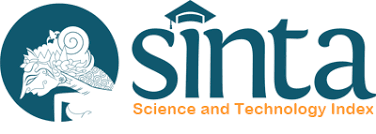The level of food insecurity prevalence in Universitas Sultan Ageng Tirtayasa (Untirta) Banten AMID Covid-19
DOI:
https://doi.org/10.22236/argipa.v6i1.6164Keywords:
Civitas Academics, COVID-19, Food Insecurity, Prevalence, UntirtaAbstract
Disease pandemic has a dramatic impact on global socio-economic, such as the current COVID-19 pandemic. Global food insecurity prevalence has increased as the impact of the pandemic and Indonesia is not an exception. In this research, we assessed food insecurity prevalence among civitas academics of Untirta, Banten. We used 8-items of Food Insecurity Experiencing Scale (FIES) that is globally used by FAO to measure food insecurity in many countries. The data was analyzed using Rash Model approach with free open access software R. A number of 12,8% of the respondents was categorized as moderate food insecurity and 3,8% was severe food insecurity. Among three groups of civitas academics, the students were the most vulnerable group to moderate food insecurity, the lecturers were the most secure group, and the staffs were the most diverse group from secure to severe food insecurity. There was no correlation between food insecurity with social demographic factors such as gender, age, and education background. Students who experience moderate food insecurity should be given an intervention by the university and government to address this issue as students is our hope for better future of the nation. This research gives insight into food security among civitas academics in light of COVID-19 pandemic.
Downloads
References
Barrett, CB. (2010). Measuring Food Insecurity. Science, 327:825–828.
Cafiero, C., Viviani S., & Nord, M. (2017). Food security measurement in a global context: The Food Insecurity Experience Scale. Measurement, 116:146-152.
Chaparro, MP., Zaghloul, SS., Holck, P., & Dobbs, J. (2009). Food insecurity prevalence among college students at the University of Hawai'i at Ma¯noa. Public Health Nutrition, 12:2097–2103.
Daniel, FL., Cancel-tirado, DI., & Vazquez, L. (2014). Prevalence and Correlates of Food Insecurity Among Students Attending a Midsize Rural University in Oregon. Journal of Nutrition Education and Behavior, 46:209–214.
Davidson, AR., & Morrell, JS. (2018). Food insecurity prevalence among university students in New Hampshire. Journal of Hunger & Environmental Nutrition, 15:118-127.
Davis, H., Sisson, SB., & Clifton, S. (2020). A call for evidence to support food security interventions on college campuses. Journal of American College Health, 23:1–3.
Marlina, E., Aghitsnillah, NQ., Aruhi, N., Rosyid, NM., Maharani, LE., Mudakir, F,. et al. (2020). Budidaya lele sebagai bentuk penujang swasembada pangan bagi masyarakat desa. Jurnal Pembelajaran Pemberdayaan Masyarakat (JP2M), 1:110–115.
FAO. (2019). The State Of Food Security And Nutrition In The World: Safeguarding against economic slowdowns and downturns. Rome: FAO
FAO and Government of Indonesia. (2020). Country Programming Framework (CPF) 2016-2020. Jakarta: FAO.
Gundersen, BC., & Ziliak, JP. (2015). Food Insecurity And Health Outcomes. Health Affairs, 34:1830–1839.
Hamelin, A., Beaudry, M., & Habicht, J. (2002). Characterization of household food insecurity in Quebec food and feelings. Social Science & Medicine, 54:119–132.
Henry, L. (2017). Understanding Food Insecurity Among College Students: Experience, motivation, and local solutions. Annals of Anthropological Practice, 41:6–19.
Herlina, Sartono, B., & Susetro, B. (2020). Kajian Validitas Instrumen Pengukuran Skala Pengalaman Kerawanan Pangan Di Indonesia. Indonesian Journal of Statistics and Its Applications, 4: 136–155.
Hirvonen, K., Abate GT., & Brauw, AD. (2020). Food and nutrition security in Addis Ababa, Ethiopia during COVID-19 pandemic. Washington, DC: International Food Policy Research Institute.
Maryani, N., Susilawati, D., Khastini, RO., & Sari, IJ. (2020). Profil Plasma Nutfah dan Jenis Penyakit Pisang Lokal Asal Pandeglang Banten. Faktor Exacta, 12:291–302.
Michalis, A. & Costarelli, V. (2020). Food security research in selected Southern European and Eastern Mediterranean countries: a narrative review. Food Security Research, 4:1-14.
Morris, LM., Smith, S., Davis, J., & Null, DB. (2016). The Prevalence of Food Security and Insecurity Among Illinois University Students. Journal of Nutrition Education and Behavior, 48:9–11.
Nord, M. (2014). Introduction to Item Response Theory Applied to Food Security: Basic Concepts, Parameters and Statistics. Rome: Food and Agriculture Organization of the United Nations.
Owens, MR., Brito-silva, F., Kirkland, T., Moore, CE., Davis, KE., Patterson, MA., et al. (2020). Prevalence and Social Determinants of Food Insecurity among College Students during the COVID-19 Pandemic. Nutrients, 12:1–17.
Rajikan, R., Shin, LH., Izzati, N., Hamid, A., & Elias, SM. (2019). Food Insecurity, Quality of Life, and Diet Optimization of Low Income University Students in Selangor, Malaysia. Jurnal Gizi dan Pangan, 14:107–116.
Seligman, HK., Laraia, BA., & Kushel, MB. (2010). Food Insecurity Is Associated with Chronic Disease among Low-Income NHANES Participants. The Journal of Nutrition, 140:304–310.
Setiawan, DE., Susilowati, MHD., & Setiadi, H. (2017). Pola Sebaran Wilayah Ketahanan Pangan di Provinsi Banten. In 8th Industrial Research Workshop and National Seminar Politeknik Negeri Bandung, 8:503–509.
Soldavini, J., & Berner, M. (2020). The importance of precision: differences in characteristics associated with levels of food security among college students. Public Health Nutrition, 9:1473-1483.
Tanziha, I. (2011). Model pemberdayaan petani menuju ketahanan pangan keluarga. Jurnal Gizi dan Pangan, 6:90–99.
Timmer, CP. (2004). Food Security in Indonesia: Current Challenges and the Long-Run Outlook. Center for Global Development working paper number 48, London, 1-22, November.
Viviani, S. (2016). Manual for the implementation of the FAO Voices of the Hungry methods to estimate food insecurity. Rome: FAO.

















